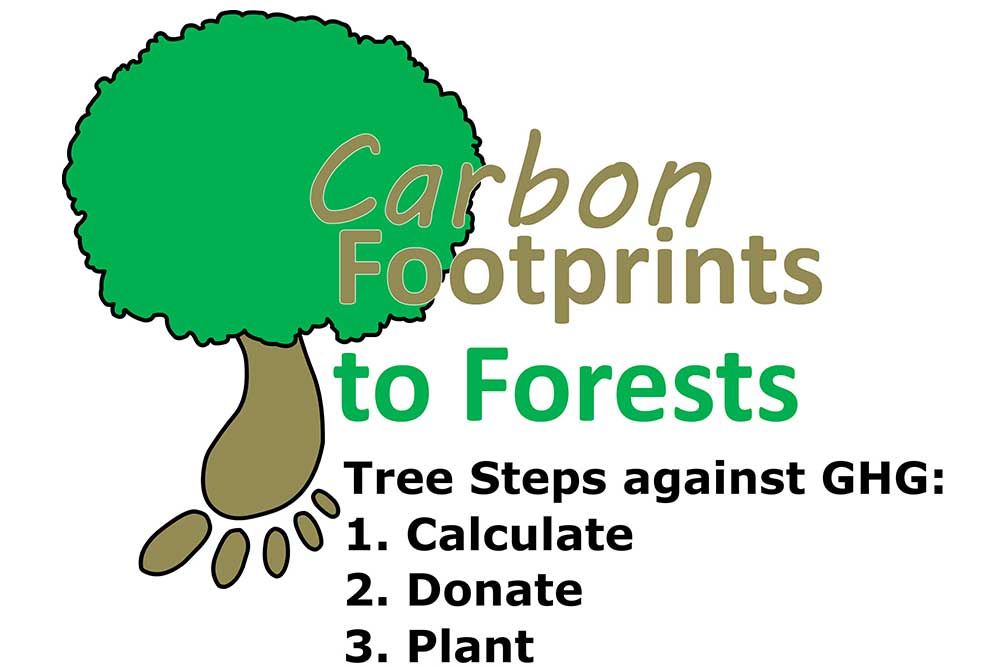Capturing carbon at Footprints to Forests

Local people are capturing greenhouse gases by ‘calculating, donating, planting’ with Carbon Footprints to Forests program
When you travel by automobile or plane or power your home you create carbon dioxide and other greenhouse gases but when you calculate, donate at footprintstoforests.com you can capture those greenhouse gases by having trees planted locally, permanently
Local conservation authorities have planted thousands of trees, covering acres, since 2014, to capture hundreds of tonnes of greenhouse gases, thanks to donations to the Carbon Footprints to Forests program.
Footprints to Forests gives people and community groups a local way to compensate for their personal carbon footprint. Every three trees planted capture about one tonne of greenhouse gases (such as carbon dioxide) in their lifetimes. This program is a way for people to respond to a global issue with local action.
If you would like to know how much carbon dioxide and greenhouse gases (GHGs) you produce through home energy use and travel by automobile and/or plane, you can try the free, easy-to-use carbon calculator at footprintstoforests.com. You can then choose to donate all or part of your carbon footprint. Trees will be planted locally and permanently to capture the equivalent of that carbon.
- Here is an example of how someone might compensate for their travel on a vacation: Someone wanting to offset a winter getaway to the Caribbean might require the planting of 17 trees to capture the equivalent of the greenhouse gases produced from the flight. This would cost $93.50 to plant and care for the trees through the Carbon Footprints to Forests program.
- Here is an example of how someone could counter-balance their commute: Someone travelling 30 kilometres to work in a minivan would need to have 14 trees planted to offset their carbon emissions. Planting and caring for the 14 trees would cost $77 to offset a year’s worth of commuting.
People or groups holding meetings can counter-balance (offset or compensate for) the carbon footprint of automobile travel to a meeting by planting trees through footprintstoforests.com. They can simply use the ‘one-time event’ drop-down choice in the website’s carbon calculator.
The conservation authorities also invite corporations to consider ways they can reduce and/or counter-balance their carbon footprint. They are invited to call their local conservation authority to find out how.
The Carbon Footprints to Forests program was first launched in 2014. It was created with support from the County of Huron and it has been run by the Maitland Valley and Ausable Bayfield conservation authorities.
In the Ausable Bayfield watershed the trees are planted at the 40-hectare Triebner Tract between Dashwood and Exeter. It is part of the provincially significant Hay Swamp Wetlands Complex.
Your carbon footprint is the greenhouse gas emissions released by typical aspects of your day-to-day life. If you use a car or truck or other vehicle, or use energy to heat and run your home, this puts more carbon dioxide and other greenhouse gases in the air. Trees help to absorb these greenhouse gases. The planting of these trees for the long term reduces the impacts of climate change on the planet and your local area. Trees also provide other benefits such as habitat for diverse species and improved air and water quality.
The website’s easy-to-use carbon calculator tells you how many tonnes of greenhouse gases are produced by your vehicle and home energy use (and air travel, if you travel by air). The calculator also tells you how much it would cost to balance the impacts of these activities. The site also tells you how many trees will be planted by your local conservation authority thanks to your donation.
Carbon dioxide and other greenhouse gases add to average temperatures but trees can help to reduce the impacts of extreme weather and climate change and help us adapt to the weather changes we are experiencing.
As trees grow, they remove carbon dioxide from the atmosphere and provide shade and cooling effects when it’s hot out and limit the impact of snow and wind during the wintertime. This helps us to adapt to extreme weather events and a changing climate.
To learn more, visit footprintstoforests.com or call Ausable Bayfield Conservation at 519-235-2610 or toll-free 1-888-286-2610.